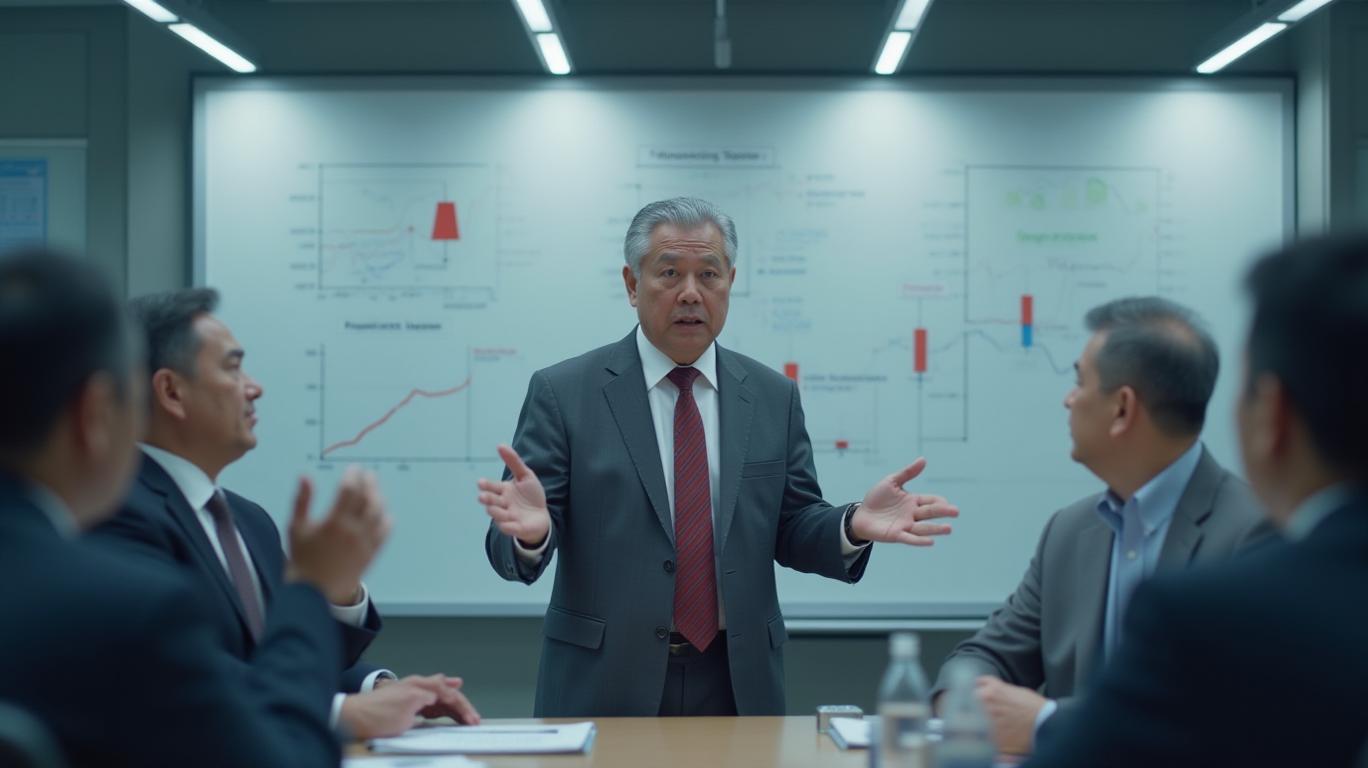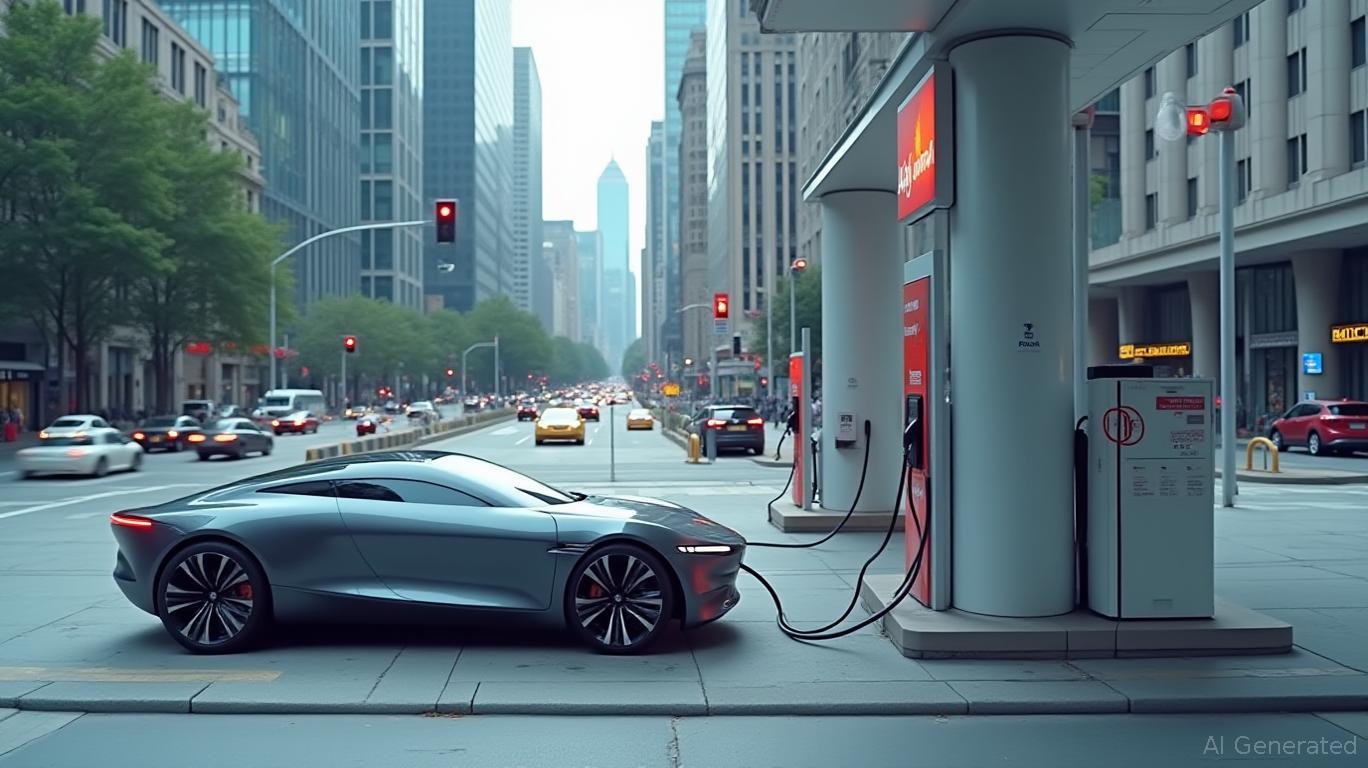German Auto Sector Struggles: Ifo Report Highlights Persistent Challenges in April 2025
The German automotive industry, a cornerstone of Europe’s industrial might, continues to face headwinds as the Ifo Institute’s April 2025 Business Climate Report for manufacturing—a sector that includes automakers—revealed a sharp decline. While the report did not provide auto-specific data for April, broader manufacturing sentiment fell to -18.1 points, down from -16.6 points in March, signaling worsening pessimism about future prospects. This trend, compounded by lingering structural challenges, paints a bleak picture for an industry already reeling from trade tensions, shifting consumer demand, and intensifying global competition.
Ask Aime: How can I invest in the struggling German automotive industry?
The Manufacturing Sector’s Decline: A Harbinger of Auto Industry Woes

The manufacturing sector’s April decline was driven by sharply deteriorating expectations, even as companies reported a slight improvement in their current business situation. Analysts attribute the gloomy outlook to U.S. tariff threats, which have loomed over German exports since early 2025. These tariffs, though suspended temporarily, have created persistent uncertainty, particularly for the automotive industry, which relies heavily on U.S. sales. For context, Germany’s auto sector has already been in crisis for over a year: in July 2024, its business climate index hit -18.3 points, a decade-low, as trade disputes and weak demand battered confidence (see Figure 1 below).
Key Drivers of the Auto Sector’s Struggles
Trade Tensions and Tariff Risks
U.S. threats to impose tariffs of up to 25% on German auto imports—a move under consideration if trade disputes over electric vehicles (EVs) escalate—have clouded the outlook. Automakers like BMW and Mercedes-Benz, which derive roughly 15–20% of revenue from the U.S. market, face a double whammy: reduced demand due to inflation and the risk of retaliatory tariffs.Global Competition and EV Shift
German automakers are losing ground to Chinese rivals like BYD and NIO, which now command 2% of Europe’s EV market and are expanding rapidly. Chinese firms leverage lower production costs and aggressive pricing strategies, while German brands grapple with high labor expenses and slow EV innovation. A 2024 study by the VDA (German auto industry association) noted that German automakers’ global market share had declined by 8% since 2019, with China’s rise being a key factor.Structural Weaknesses
The sector’s reliance on high-cost, unionized labor—including generous health and vacation benefits—has eroded its competitiveness. Meanwhile, outdated supply chains and delayed EV investments have left German firms trailing behind Tesla and Asian manufacturers. Volkswagen’s plan to cut thousands of jobs in Germany by 2025 underscores the severity of these structural issues.
Economic and Industry Context: A Perfect Storm
Germany’s broader economy is stagnating, with GDP growth projected at just 0.1% in 2025, its weakest performance since 2020. This stagnation is driven by declining industrial output, with manufacturing production 20% below pre-pandemic (2018) levels. The auto sector’s woes are emblematic of this decline:
- German auto sales fell by 1% in 2024 compared to 2019, while Chinese automakers’ sales in Europe rose by 35% over the same period.
- Used car sales in Germany dropped 23% from their 2016 peak, reflecting consumer caution and weak demand.
Investment Implications: Navigating the Storm
For investors, the German auto sector’s challenges pose both risks and opportunities.
- Risks:
- Valuation Pressures: German automakers’ shares, such as Daimler (DAI) and Volkswagen (VOW), have underperformed peers like Tesla (TSLA) in recent years.
- Trade Policy Uncertainty: A U.S. election in 2024 could bring a pro-tariff administration, further squeezing margins.
- Opportunities:
- EV Transition Plays: Companies like BMW (BMW) and Mercedes-Benz (DAI) are doubling down on EVs, but investors should demand clear cost-cutting plans and market-share recovery strategies.
- Supply Chain Innovators: Firms like Continental (CONG) or Bosch, which are pivoting to software-driven automotive solutions, may offer resilience.
Conclusion: The Road Ahead
The German auto sector’s April 2025 struggles reflect a deeper crisis rooted in structural inefficiencies and global competition. With manufacturing sentiment at -18.1 points and auto-specific data from 2024 showing indices as low as -18.3 points, the sector’s recovery hinges on three critical factors:
1. Cost Reduction: Automakers must address high labor costs and outdated supply chains.
2. EV Innovation: Competing with Chinese and U.S. rivals will require faster adoption of battery tech and software-driven vehicles.
3. Policy Support: Germany needs trade agreements and subsidies to counter U.S. and Chinese tariff threats.
Without these changes, the sector’s decline could deepen, dragging down Germany’s economy further. For investors, the German auto industry remains a high-risk, low-reward bet until there are clear signs of structural reform and a turnaround in global competitiveness.
Joe Weisenthal is a pseudonym for a financial journalist known for in-depth market analysis.


_41c5d7291749577840008.jpeg)







